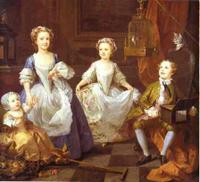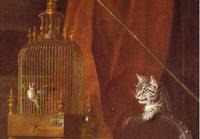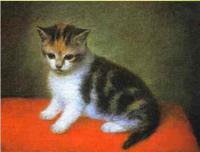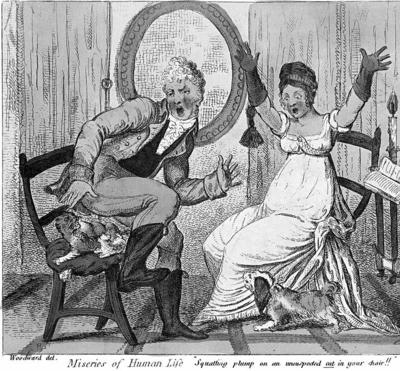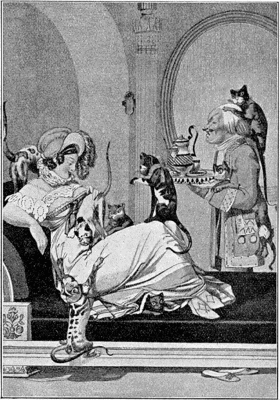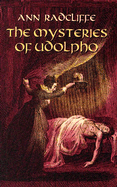


regency style and just in time for Hallowe’en…the gothic novel, a very popular genre that began in 1764 with the publication of The Castle of Otranto by Hugh Walpole, and ended in 1820 with Melmoth the Wanderer by Charles Maturin.
The influence of the gothic novel is still with us today; its elements creep into films and novels, and the contemporary “gothic romance” is enjoying a comeback. So what is it about gothics people liked (then and now), other than a good scare and the idea of the TSTL heroine creeping around dark passages and wearing only her nightie?
They feature exotic, often Italian settings, sinister castles and abbeys–something very popular in the regency era , when landowners commissioned picturesque ruins and follies to grace their landscape. As well as the good scare, they have a strong moral twist of justice done and wrongs avenged, with one or two people, usually the hero/heroine or a narrator (like Robert Walton, the narrator of Mary Shelley’s Frankenstein), who lives to tell the tale, and with whom we can identify. In some cases, as in Wuthering Heights, the matter-of-fact tone of the narrator (Mr. Lockwood) serves to strengthen the supernatural elements; if a twit like Mr. Lockwood can hear the ghostly Cathy at the window, then it must be true. The monsters, real or imagined, are instruments of justice or revenge, like Frankenstein’s monster, or Conan Doyle’s hound in Hound of the Baskervilles, written in 1902 but drawing strongly on the gothic tradition.
I have a soft spot for gothics since the hero of my book Dedication, Adam Ashworth, publishes gothic novels under the name of Mrs. Ravenwood, and I had a lot of fun creating purple passages to head each chapter. I based most of them on the work of the gothic novelist I know best, Mrs. Ann Radcliffe. She published bestsellers beginning with The Mysteries of Udolpho (1794), skewered by Jane Austen’s Northanger Abbey. The scene where Catherine explores an ancient chest and finds a laundry list is pure gothic pastiche. And remember the horrid veil?
Ah yes, the horrid veil.
If you’ve read Udolpho (it’s still in print) you’ll certainly remember the scene where the heroine discovers the veil and draws it aside (she’s creeping around a secret passage at the time, having been kidnapped to a mysterious castle) and swoons in horror at what she sees. It’s a tremendously effective scene. Every time she remembers it, which is fairly often, there’s a frisson of terror. And so on through the book. You’re still wondering. The references to the horrid veil become less frequent toward the end and you begin to wonder if Mrs. R has forgotten about it. Oh, surely not. Because if you were a character in a gothic who was denied such knowledge you know you’d go mad, or go into a nunnery, or have to pretend to be a ghost or some such. Then, when you’ve almost given up hope, Mrs. R. delivers, sort of. Busy tidying up the odds and ends of the novel, she reveals, in one throwaway sentence, that what the heroine saw behind the veil was the wax effigy of a worm-ridden corpse. Huh? I believe there’s a reason for the wax effigy being there–possibly a warning for visitors to keep out of the secret passage–you couldn’t expect the owner of a castle in a gothic to do anything sensible like post a “Keep Out” or “Servants Only” sign.
OK, enough from me. What do you like about gothic elements? Have you used them in your books? What gothic-influenced novels do you like? Could you write one with a straight face?
Janet






